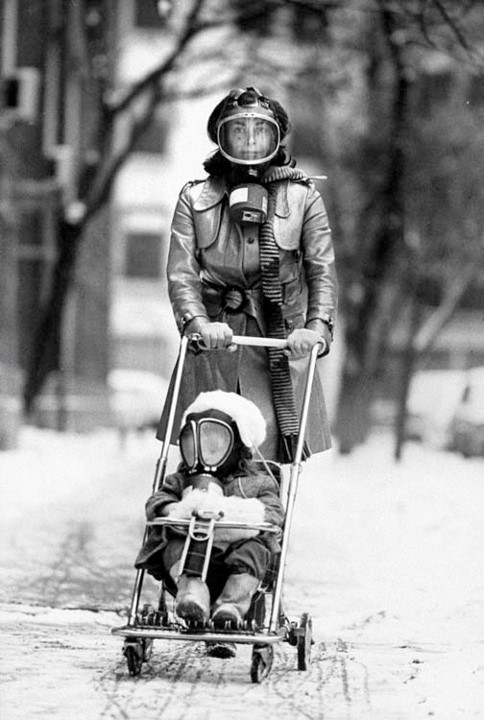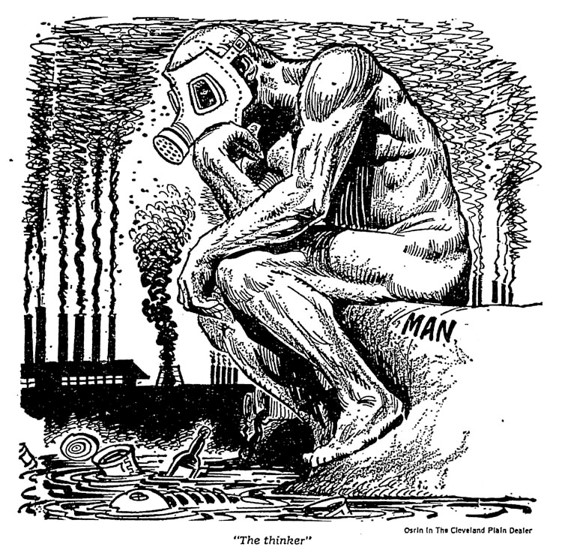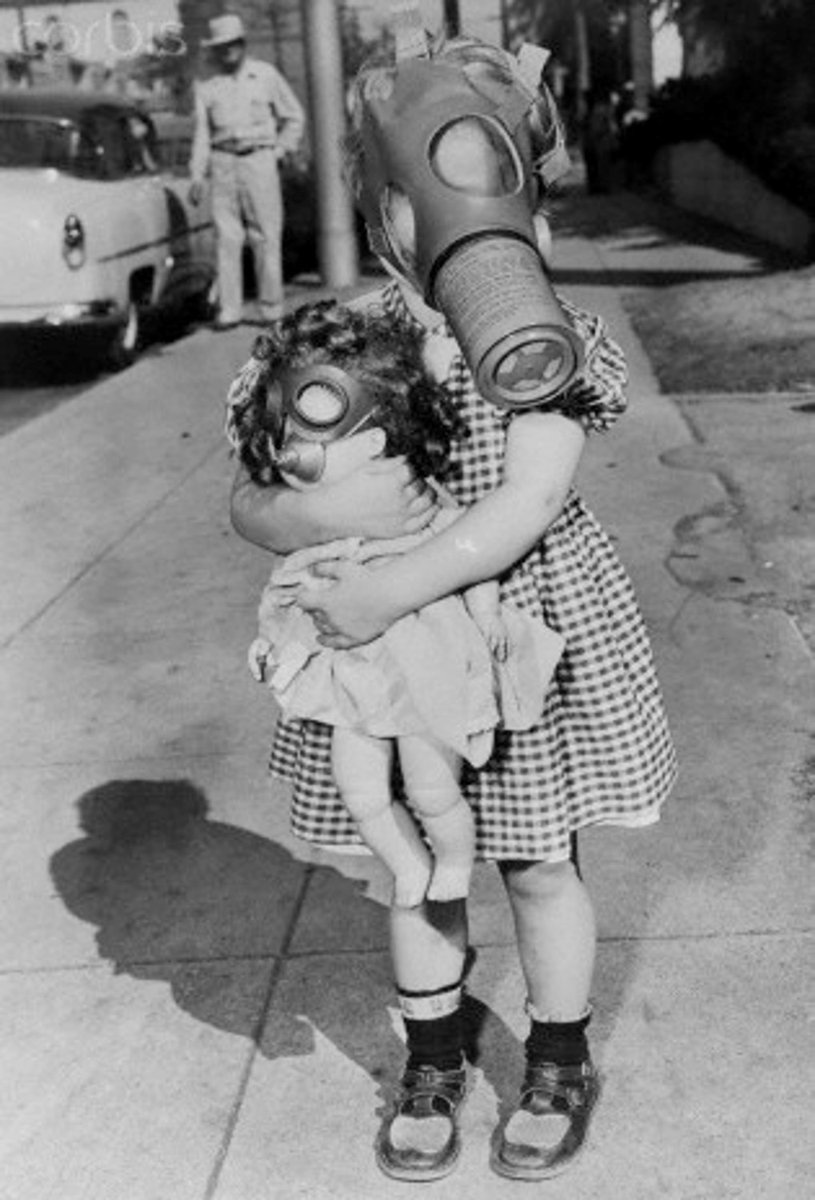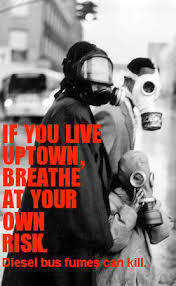With the 50th anniversary of #EarthDay  https://abs.twimg.com/hashflags... draggable="false" alt=""> happening next week, let’s look back at one of the most popular environmental icons from 1970: the gas mask.
https://abs.twimg.com/hashflags... draggable="false" alt=""> happening next week, let’s look back at one of the most popular environmental icons from 1970: the gas mask.
Here’s an AP photo of an Earth Day protester in NYC, trying to smell a flowering magnolia through his mask:
Here’s an AP photo of an Earth Day protester in NYC, trying to smell a flowering magnolia through his mask:
Earlier that year, Life magazine did a feature article on the environment. The issue began with a photograph of a woman pushing a stroller. Both the woman and the toddler are wearing gas masks.
Not just in photographs, but in cartoons and other visual media, the gas mask became ubiquitous. Here’s an editorial cartoon from the Cleveland Plain Dealer featuring the Thinker outfitted in a mask, contemplating the air and water pollution all around:
And here’s a poster produced by an environmental group depicting Christ hanging from a smokestack cross. He speaks through his mask into the smoggy air: “Father forgive them for they know not what they do.”
Why did the gas mask become so popular during this time? It was used by activists to protest current conditions—esp. air pollution—and to warn about the future. It symbolized scientific concerns about human survival in an increasingly degraded environment.
Perhaps its first use by env. protesters was in 1954, when air pollution activists staged a march through Pasadena, CA. The event was led by middle-class white women who called themselves the “Smog-a-Tears” (after Disney’s Mouseketeers). Some brought their children with them:
The gas mask conveyed the idea of universal vulnerability, suggesting that everyone—no matter their race or class—suffered equally from pollution. Indeed, much of the legislation passed around Earth Day assumed that “everyone breathes the same air and drinks the same water.”
In this way, the gas mask obscured the experience of environmental racism and injustice. As one Earth Day organizer put it: “If air pollution continues to get worse, the rich will produce the gas masks but they will not be the first to have to buy them.”
The gas mask, though, is not a static symbol. It was later used by the West Harlem-based @weact4ej in their struggles against air pollution and environmental racism. Here, it represents not universal vulnerability—but dangers experienced by particular bodies in particular places.

 Read on Twitter
Read on Twitter happening next week, let’s look back at one of the most popular environmental icons from 1970: the gas mask.Here’s an AP photo of an Earth Day protester in NYC, trying to smell a flowering magnolia through his mask:" title="With the 50th anniversary of #EarthDay https://abs.twimg.com/hashflags... draggable="false" alt=""> happening next week, let’s look back at one of the most popular environmental icons from 1970: the gas mask.Here’s an AP photo of an Earth Day protester in NYC, trying to smell a flowering magnolia through his mask:" class="img-responsive" style="max-width:100%;"/>
happening next week, let’s look back at one of the most popular environmental icons from 1970: the gas mask.Here’s an AP photo of an Earth Day protester in NYC, trying to smell a flowering magnolia through his mask:" title="With the 50th anniversary of #EarthDay https://abs.twimg.com/hashflags... draggable="false" alt=""> happening next week, let’s look back at one of the most popular environmental icons from 1970: the gas mask.Here’s an AP photo of an Earth Day protester in NYC, trying to smell a flowering magnolia through his mask:" class="img-responsive" style="max-width:100%;"/>







